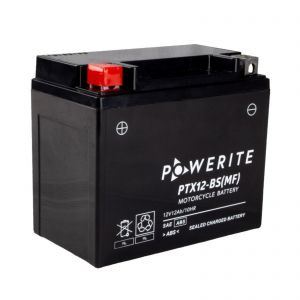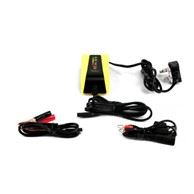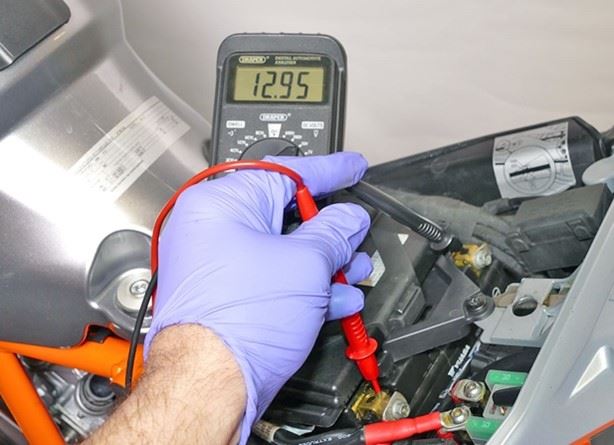Caring For Motorcycle Batteries Over Winter
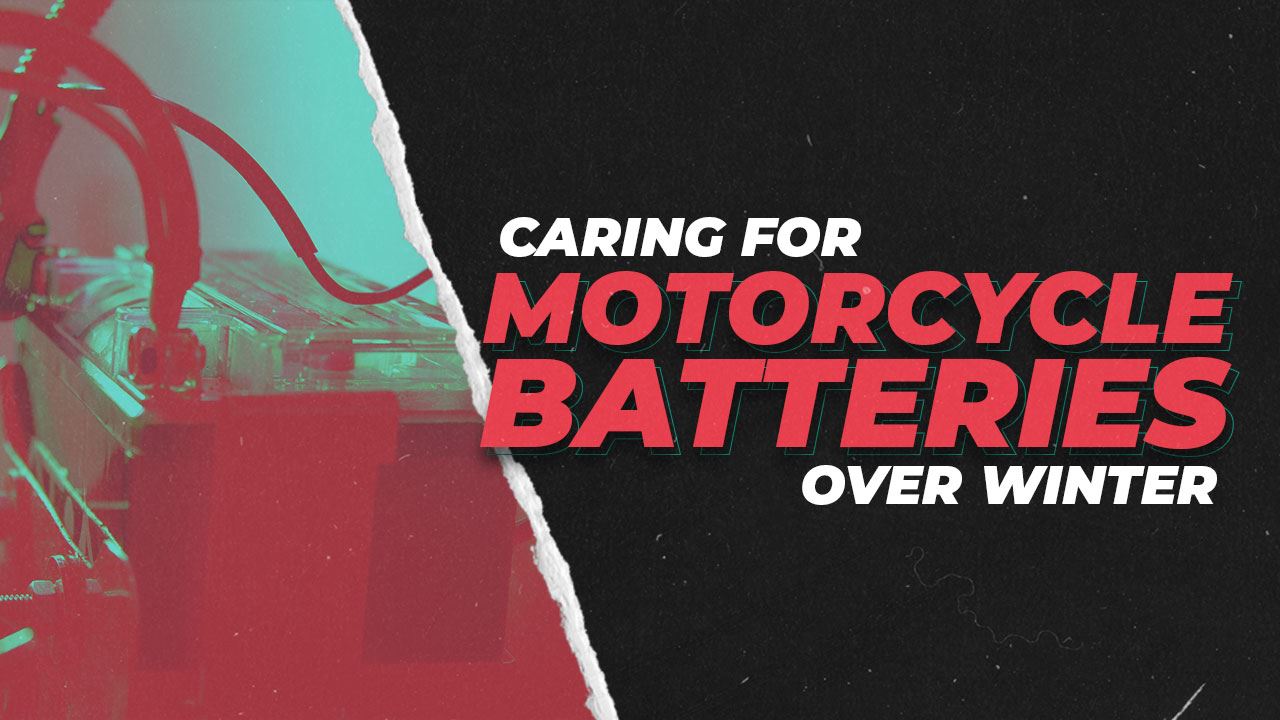
Caring For Motorcycle Batteries Over Winter

Motorcycle batteries suffer in the cold, and they also like to be used. Winter is therefore a difficult time for a battery, unless of course you use your bike as often as in the summer, or you care for the battery properly. If you look after your battery it should last 3 to 5 years. If you don’t it may only last a year. This battery-specific post gives more detail and answers some frequently asked questions. If you’re looking to change you battery entirely before the winter comes, there’s a great article that helps answer the question, ‘What’s the best motorcycle battery to buy?’ on the Bennetts bike social page.
TWO TOP TIPS: KEEP IT WARM, KEEP IT CHARGED. The lower the state of charge the greater the ratio of water to acid, so the more likely the electrolyte is to freeze in extreme cold. If the battery freezes the plates buckle and the case could crack. A fully charged battery freezes at around -50°C. A fully discharged battery freezes at around -2°C.
General checks:
It is important to identify the type of battery fitted on your bike. A few smaller bikes are still being fitted with the conventional flooded (wet cell) batteries that need to have the electrolyte level checked regularly, and many older bikes have them. They are easily distinguishable by the removeable caps and the UPPER and LOWER or MAX and MIN level lines marked on the front, along with the slightly see-through body that just about allows a view of the level of the electrolyte within. Most new bikes are now fitted with a 'maintenance-free' (MF) battery, either of the AGM type or the Gel type, that, after the initial filling and charging, can be considered as a sealed unit, but not as totally maintenance free. Some bikes are being fitted with Lithium batteries from new and they are becoming more popular as an upgrade. For a good overview of the different battery types, check out ‘Motorcycle Battery Types Explained’ on the Begin Motorcycling page.
Note: When removing and fitting a battery always disconnect the negative (-) lead first and reconnect it last.
Check the battery leads are tight on the terminals, and the leads and the terminals are clean and free of condensation and corrosion. Apply a dedicated battery terminal grease to the terminals and lead ends or smear them with petroleum jelly (Vaseline) – do not use a mineral grease.
Keep the battery case clean.
If the bike is not being used regularly check the battery voltage using a voltmeter and charge the battery using a dedicated smart/intelligent motorcycle battery charger every couple of weeks, or as often as necessary (see Charging a battery and FAQ’s below). Do not use a car battery charger. Note that Lithium batteries have different charging requirements to lead-acid batteries and require a different type of charger. Always follow the instructions supplied with both the battery and the charger.
Checking electrolyte level on a conventional wet cell/flooded battery:
The electrolyte level in conventional wet/flooded batteries goes down as part of the natural electro-chemical process in which water in the electrolyte turns to gas and is emitted via the vent. If the level drops too low and the lead plates are exposed to air they deteriorate rapidly leading to battery failure. Regularly check electrolyte level and top up with de-ionised or distilled water when necessary– DO NOT use tap water, and DO NOT refill with battery acid.
- Make sure the battery is level.
- The electrolyte is visible through the battery body and must lie between the UPPER and LOWER or MAX and MIN level lines marked on the case.
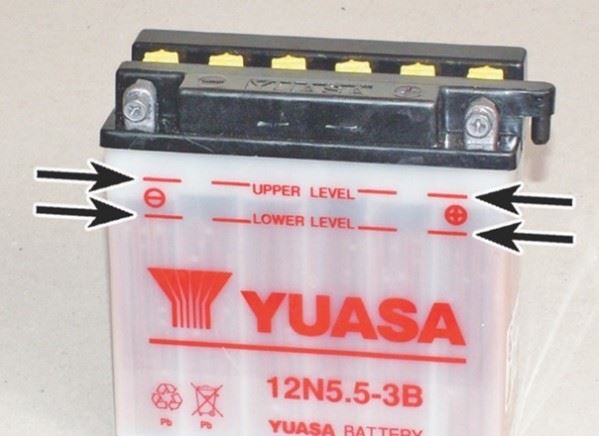 If the level is low remove the cell caps and fill each cell to the upper/max level mark with de-ionised or distilled water. Do not use tap water (except in an emergency), and do not overfill. The cell holes are quite small, so use a small funnel or a clean plastic squeeze bottle with a small spout to add the water. Fit the cell caps.
If the level is low remove the cell caps and fill each cell to the upper/max level mark with de-ionised or distilled water. Do not use tap water (except in an emergency), and do not overfill. The cell holes are quite small, so use a small funnel or a clean plastic squeeze bottle with a small spout to add the water. Fit the cell caps.

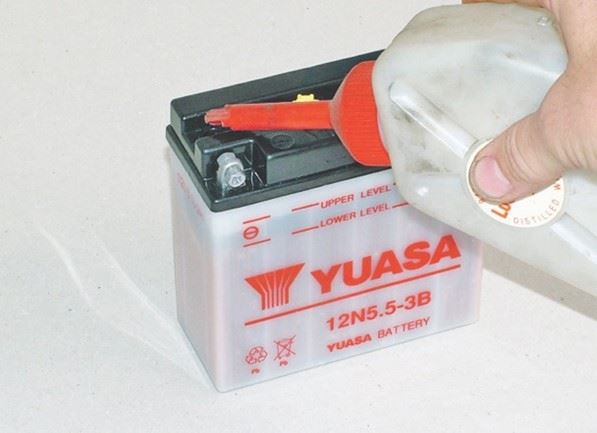
Charging a battery:
The best thing to do, if you haven’t already done it, is to get a decent dedicated motorcycle battery charger that matches the requirements of your battery, and intelligent chargers are by far the best type as they are able to read the condition of the battery and give it only what it needs and stop when it has had enough. DO NOT use a car battery charger. Lithium batteries require a higher charging voltage than lead-acid batteries, and so you should only use a dedicated lithium charger or one that has a lithium setting on it. You can use a lead-acid charger if necessary, like you can use a lithium charger on a lead-acid battery, but it is best not to do so except in cases of urgency or emergency, and then only charge the battery for as long as it takes to give it enough charge to start the bike.
How long you need to charge a battery for depends on the state of charge when you start charging it, and this can be determined by measuring its voltage using a voltmeter. A battery showing 10 volts is going to need a lot longer than one showing 12 volts. When fully charged a battery should show 12.8 to 13.0 volts. Using an intelligent charger takes away the anxiety of leaving a battery on charge overnight and ensures it cannot be overcharged, which they don’t like. If you don’t have one it is better to partially charge the battery and disconnect it, then come back later and charge it some more, rather than leave it connected for too long and overcharge it. Leave the battery to stand for at least half an hour after the charger has been disconnected before checking the voltage otherwise you will get an exaggerated reading.
Battery types and their cold weather characteristics:
Lead-Acid batteries
Lead-acid batteries, whether wet cell, AGM or Gel, discharge quite quickly in the cold and when not in use and should be charged regularly. Heavily discharged lead-acid batteries can often be recovered by intelligent chargers, but not always. The best thing is to keep them charged. They like to be used, and the more you use them the longer they last. Sulphation, a build-up of lead sulphate crystals, occurs naturally to some degree over the lifetime of a battery, but will increase if a battery is unused, undercharged or overcharged. A sulphated battery discharges more quickly and takes longer to charge, causes heat build-up, and reduces battery life. If left it ruins a battery, but if caught in time it can be treated by gentle charging. When charging a conventional flooded battery remove the cell caps and rest them on the tops of the holes to improve venting.
Lithium batteries
Lithium batteries discharge quite slowly when not in use and may only require a charge every six months. They also charge quite quickly. Do not let a lithium battery discharge fully, as it will not be recoverable, though if it is a good quality one with a BMS (battery management system) this should not happen, and likewise it should not be possible to overcharge it. Lithium batteries get sluggish in the cold even when new – this is not a problem with the battery but a characteristic, and all you need to do is wake it up by leaving the ignition and lights on for a minute or two to ‘warm’ the battery before starting the bike.
FAQ’S:
- Q: How quickly does a battery discharge?
- A: A disconnected lead-acid battery loses up to 1% of its charge every day at a temperature of around 20°C and discharges more quickly as the temperature drops. If the battery is left connected and is powering an alarm, clock, or anything else it will discharge more quickly. A lithium battery does not discharge as quickly as a lead-acid battery.
- Q: Should I remove the battery or disconnect it over winter?
- A:It depends – if your bike has an alarm then leave it connected or you risk losing your bike. However the alarm slowly drains the battery so you must connect it to a smart trickle charger and leave the charger permanently on. If your bike does not have an alarm and you do not have a trickle charger and it is cold, then it is best to remove the battery and store it in a dry place at room temperature, check it every week and charge it when necessary (see Q5). If you have to store the battery in a cold place do not sit it on a concrete floor or metal surface, instead rest it on a piece of carpet or a towel, and cover it, the idea being to keep it as warm as possible. If you don’t have a power source where the bike is stored then remove the battery and charge it indoors.
- Q: What sort of charger should I use?
- A: First and foremost a dedicated motorcycle battery charger, not one for car batteries. Preferably use a smart/intelligent charger that regulates the amount of charge according to what the battery needs, and that switches itself off when the battery is charged and on when charge is needed. These chargers provide a trickle charge and can be left permanently connected to the battery for months. Make sure the charger is suitable for the type of battery you have, so if you have a 6V battery make sure the charger has a 6V function, and if you have a Lithium battery make sure the charger has a Lithium charging function. Most motorcycle chargers come with an adapter that you leave connected to the battery, and you plug the charger into the adapter, allowing the seat/side panel/battery cover to remain in place.
- Q: Can I leave a trickle charger/battery tender permanently connected over winter?
- A: Yes you can, but you must be certain that you are using a dedicated motorcycle charger with smart/intelligent control, meaning it varies the charge rate and switches itself on and off as required. If you use a standard charger that puts out a constant charge you will overcharge the battery.
- Q: I don’t have a trickle charger - how often should I charge the battery when the bike is not in use?
- A: The simple answer is as often as necessary, and how often this is depends on whether the battery is left connected to the bike, whether the bike has an alarm or clock, and how cold it gets where the bike/battery is stored. Battery age and condition are factors as well. The thing to do is to check the battery voltage every week or two, and when the voltage drops to 12.4V charge it for as long as required to bring it up to 12.8V. Doing this ensures the bike will start when you want it to.
- Q: What will happen if I don’t keep my battery charged?
- A: The battery will slowly but surely lose charge, and given enough time will discharge completely. Some chargers can recover batteries from a deep discharge of around 5V, but leave it too long and you will need a new battery. Lithium batteries have a lower self-discharge rate and may be OK, but bear in mind that they cannot be recovered from a deep discharge.
- Q: Does running the engine keep the battery charged?
- A: Running the engine at idle does not put enough charge into the battery to keep it going through winter, and starting the bike uses a lot of battery. Use a charger to charge the battery, not the engine, unless you are going for a regular ride that is long enough to provide enough charge. Even then you need to keep the battery charged so it starts the bike if you do go for a ride.
